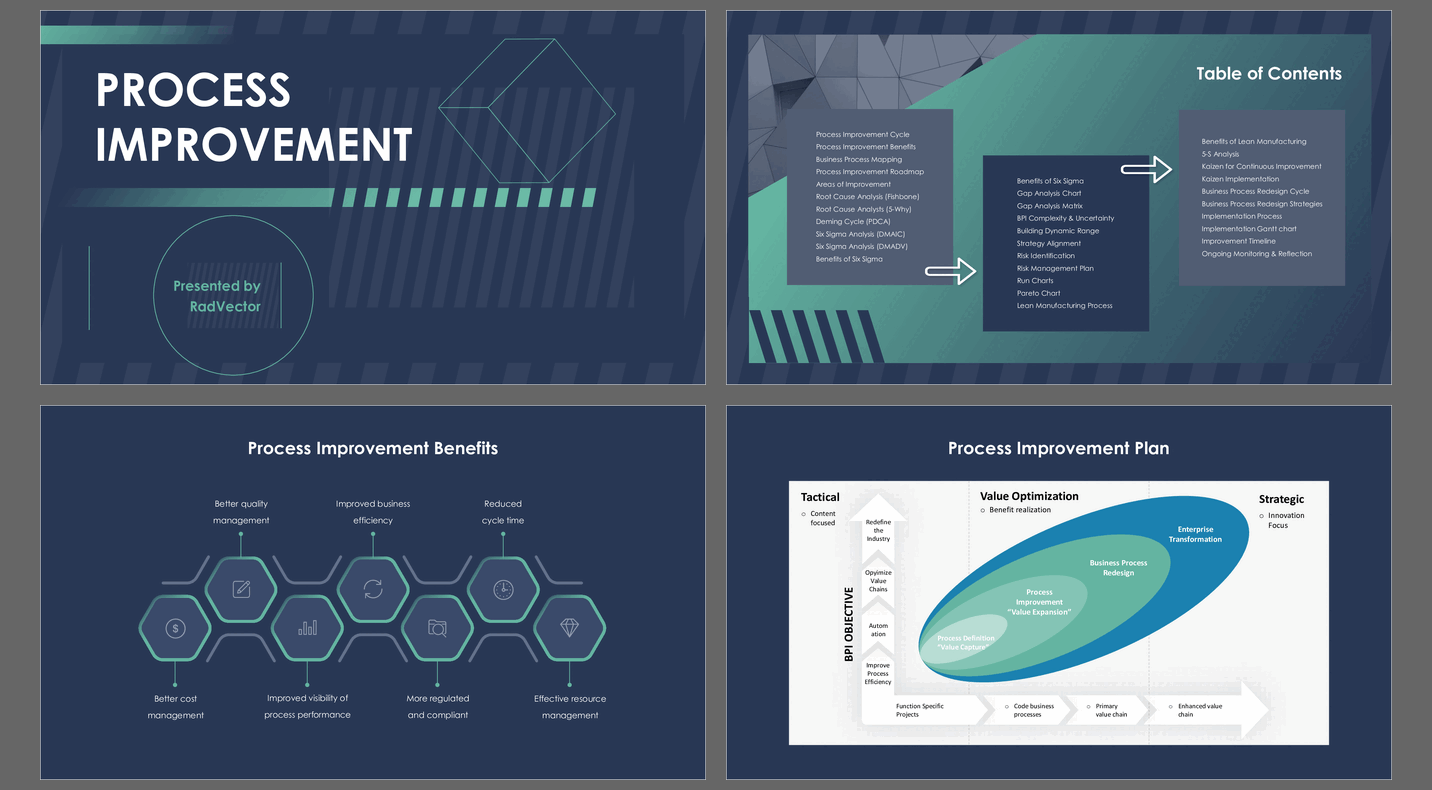Process Improvement (PowerPoint PPTX Slide Deck)
PowerPoint (PPTX) 54 Slides
SPECIALIZED POWERPOINT TEMPLATES PPT DESCRIPTION
Process Improvement
Introduction
Process improvement is a structured approach to identifying inefficiencies, optimizing workflows, and enhancing overall performance in an organization. It is essential for maintaining competitiveness, reducing costs, improving quality, and increasing customer satisfaction. A well-prepared Process Improvement Presentation helps communicate the need for change, the proposed strategies, and the expected benefits to key stakeholders.
1. Understanding Process Improvement
Process improvement focuses on analyzing existing workflows and making systematic enhancements to increase efficiency, eliminate waste, and improve outcomes. It is often guided by methodologies such as Lean, Six Sigma, Kaizen, and Total Quality Management (TQM).
2. Key Components of a Process Improvement
• Current Process Overview – A clear description of the existing workflow, including its goals, steps, and key participants.
• Problem Identification – Analysis of inefficiencies, bottlenecks, delays, errors, or redundancies that impact performance.
• Process Mapping & Analysis – Use of tools like flowcharts, SIPOC diagrams, and value stream mapping to visualize and analyze workflows.
• Improvement Strategies – Introduction of techniques such as automation, standardization, elimination of non-value-adding steps, and optimization of resources.
• Implementation Plan – A structured approach to rolling out changes, including roles, responsibilities, timelines, and required resources.
• Performance Metrics & KPIs – Definition of measurable success criteria, such as cost reduction, error minimization, cycle time improvement, and customer satisfaction.
• Risk Assessment & Mitigation – Identification of potential risks associated with process changes and strategies to address them.
• Training & Change Management – Plans for educating employees, ensuring buy-in, and facilitating smooth transitions.
3. Benefits of Process Improvement
A well-executed process improvement initiative delivers multiple benefits:
• Increased Efficiency: Streamlined workflows reduce waste and optimize resource utilization.
• Cost Savings: Eliminating redundancies and inefficiencies lowers operational costs.
• Higher Quality Outputs: Improved processes lead to better products and services.
• Enhanced Customer Satisfaction: Faster, error-free processes improve service delivery.
• Boosted Employee Productivity: Clearer workflows and automation reduce manual workload.
4. Conclusion
A Process Improvement Presentation is a vital tool for driving change within an organization. By clearly outlining challenges, proposed solutions, and benefits, it ensures stakeholder alignment and successful implementation. Continuous improvement fosters a culture of innovation and long-term success.
Got a question about the product? Email us at support@flevy.com or ask the author directly by using the "Ask the Author a Question" form. If you cannot view the preview above this document description, go here to view the large preview instead.
Source: Best Practices in Specialized PowerPoint Templates PowerPoint Slides: Process Improvement PowerPoint (PPTX) Presentation Slide Deck, RadVector Consulting









